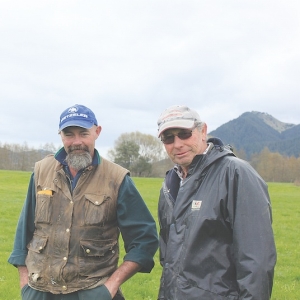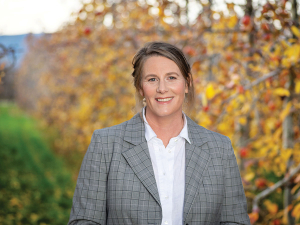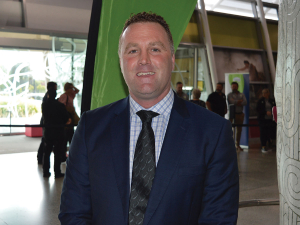Suzanne Pasley and Barry Latimer milk 364 cows on their 115ha farm south-west of Whangarei.
The couple run a system four operation, feeding stock maize silage and PKE throughout the year. This enabled them to successfully farm through two droughts and three floods in two seasons with little impact on production.
Northland weather has scarcely left the headlines since February this year when western parts of the region suffered the biggest drought in six years – the third in five seasons – followed by two 50-year floods in the north and east of the region in August.
As Pasley and Latimer farm an area just to the east of the Tangowahine Valley, he says they had to work through both extremes, the farm experiencing drought and flood last season.
While his western neighbors were affected more by winds than rain in August, Latimer got 150mm which lay for three days on established and newly planted pasture.
And while eastern neighbors were enjoying a moist wet autumn, Latimer says they got no noticeable rain in the six months from September 2013 to April 2014. “You’d pass through pockets of rain all the way back to the home and the farm was completely bone dry.”
Despite this the farm’s three-year average production has been 154,000kgMS – 435kgMS/cow, achieved with a high input system to take the bumps out of the season.
While they normally use about 300t of PKE a year they needed to increase this volume to 360t for the last two seasons. This they mixed with maize silage till October. They feed turnips as a summer crop. Latimer also uses grass silage and hay extensively which he harvests off a 10ha runoff and a 70ha drystock property.
The couple fed stock in the paddock till 2007 when Latimer and his father Bryan had a 200-cow HerdHome built which enabled them to get even more out of the cows.
While they always tried to maximise production before feeding cows extra, this wasn’t always possible due to the potential for reduced feed usage from feeding on the ground.
While the 200-cow barn isn’t enough to hold the entire herd, Latimer has made this work in their favor, using its size and his knowledge of herd behavior to priority feed young stock without running separate herds.
“If you want to get feed into heifers you can divert the stock that walk into the shed first around the barn and back out towards the paddock.
“If you open it up towards the end of the milking when there are more heifers than cows then they’ll get a better go. There are plenty of tricks you can do to get the most out of it.”
The couple also used it as a nursery for easier calving says Latimer. They have set a split calving regime with half calving from April 1 and the other half calving from July 27.
While Latimer says he needs to keep his eyes on the ball, it allows him to get the most out of the season while keeping his options open about handling replacements and herd management. “If the cows don’t get pregnant in October they have another chance in January.”
The HerdHome prompted another shift, from turnips to maize. While turnips are easier feed out from a paddock, Latimer says maize offered a storage option for later feeding. Usually 10ha of the farm in river flat gets planted, yielding about 25-29t/ha, enough to last until September-October.
They still plant 4ha of turnips, which Latimer uses as a form of insurance in summer.
Mixing species worked well for pasture management too – rye, clover and coxfoot in permanent pasture replacements. It has proved more likely to survive during drought while also being more resistant to water and flood damage.
The couple got some help at cleanup, ASB Bank staff coming to help clean the fencelines after floodwaters had receded. “It was a nice gesture and totally unexpected.”
















